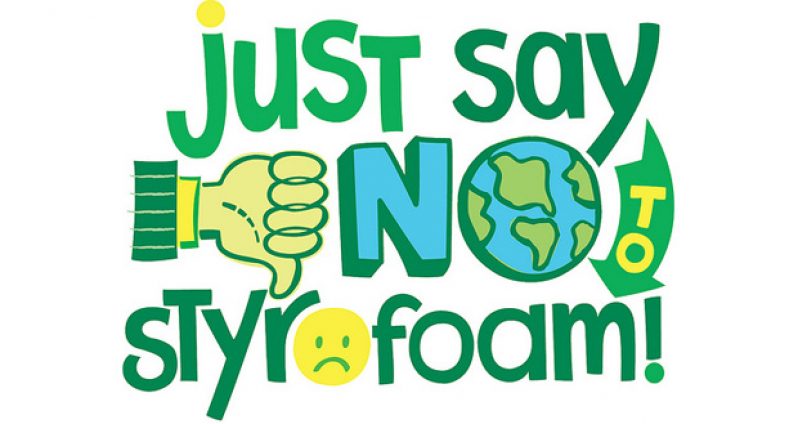LATELY, there has been a lot of buzz about the impending Styrofoam ban, and many persons, especially those in the business community, are unsure of the implications this will have on their business, especially as it relates to cost and availability of the alternatives. Therefore, over the next few months, the EPA will be educating the public on the specifics of the ban to ensure a smooth transition to the alternatives to Styrofoam.

What is Styrofoam?
Styrofoam is a disposable product made of polystyrene, which is a petroleum-based plastic. Styrofoam is used in all types of products, but is especially common in the food service industry in the form of cups, plates and boxes. It is convenient, cheap, and provides excellent conditions for storage of food and beverages.
Environmental Impacts
- Polystyrene is non-biodegradable. A Styrofoam cup can take as long as 500 years to decompose completely.
- Because recycling Styrofoam is very expensive, it is usually disposed of, taking up a lot of space in landfills, even more than paper, and may eventually re-enter the environment when landfills are breached.
- Styrofoam is harmful for the environment because it is made with petroleum, a non-renewable resource which contributes to air pollution and climate change.
- When not disposed in a proper manner, Styrofoam can contribute to flooding by clogging drains.
- When Styrofoam enters our waterways, it can be ingested by aquatic animals, thus harming or killing them.
Health Impacts[box type=”shadow” align=”alignright” width=”300px” ]Ban on importation of Styrofoam
Effective January 01, 2016, under the Environmental Protection (Expanded Polystyrene Ban) Regulations, 2015, there will be a prohibition on the importation of Styrofoam for use in the food service industry.
Note: Importers who have Styrofoam products in stock will be allowed a phased out period which will be stipulated by the Minister.[/box]
- Polystyrene, the main material in Styrofoam, contains the substances Styrene and Benzene, which are both considered carcinogens (cancer causing) and neurotoxins that are extremely hazardous to human health.
- Hot foods or liquids, alcohols, oils and acidic foods start a partial breakdown of Styrofoam, causing some toxins to be released into our foods, which, when eaten, are absorbed into our bloodstream.
- According to studies, women exposed to styrene vapours have demonstrated menstrual disorders, and suffered from metabolic disturbances occurring during pregnancy.
Other health impacts include:
- Irritation of the skin;
- Irritation of the eyes;
- Irritation of the upper respiratory tract;
- Gastrointestinal problems; and
- Affects kidney function.
While the ban from January 01, 2016, will not prohibit the sale of Styrofoam, the EPA in keeping with the Regulations objective shall guide and encourage the use of recyclable, biodegradable and other environmentally- friendly products. Remember the “environment is everybody’s business”. Join us again next week as we continue to examine the impending Styrofoam ban.
SOURCE:
- Environmental Protection (Expanded Polystyrene Ban) Regulations, 2015.

- http://www.earthresource.org/campaigns/capp/capp-styrofoam.html
- https://en.wikipedia.org/wiki/Styrofoam
You can share your ideas and questions by sending letters to: “Our Earth, Our Environment”, C/O EIT Division, Environmental Protection Agency, Ganges Street, Sophia, GEORGETOWN, or email us at: eit.epaguyana@gmail.com or you can contact the Agency on 225-5467-9.



.jpg)










